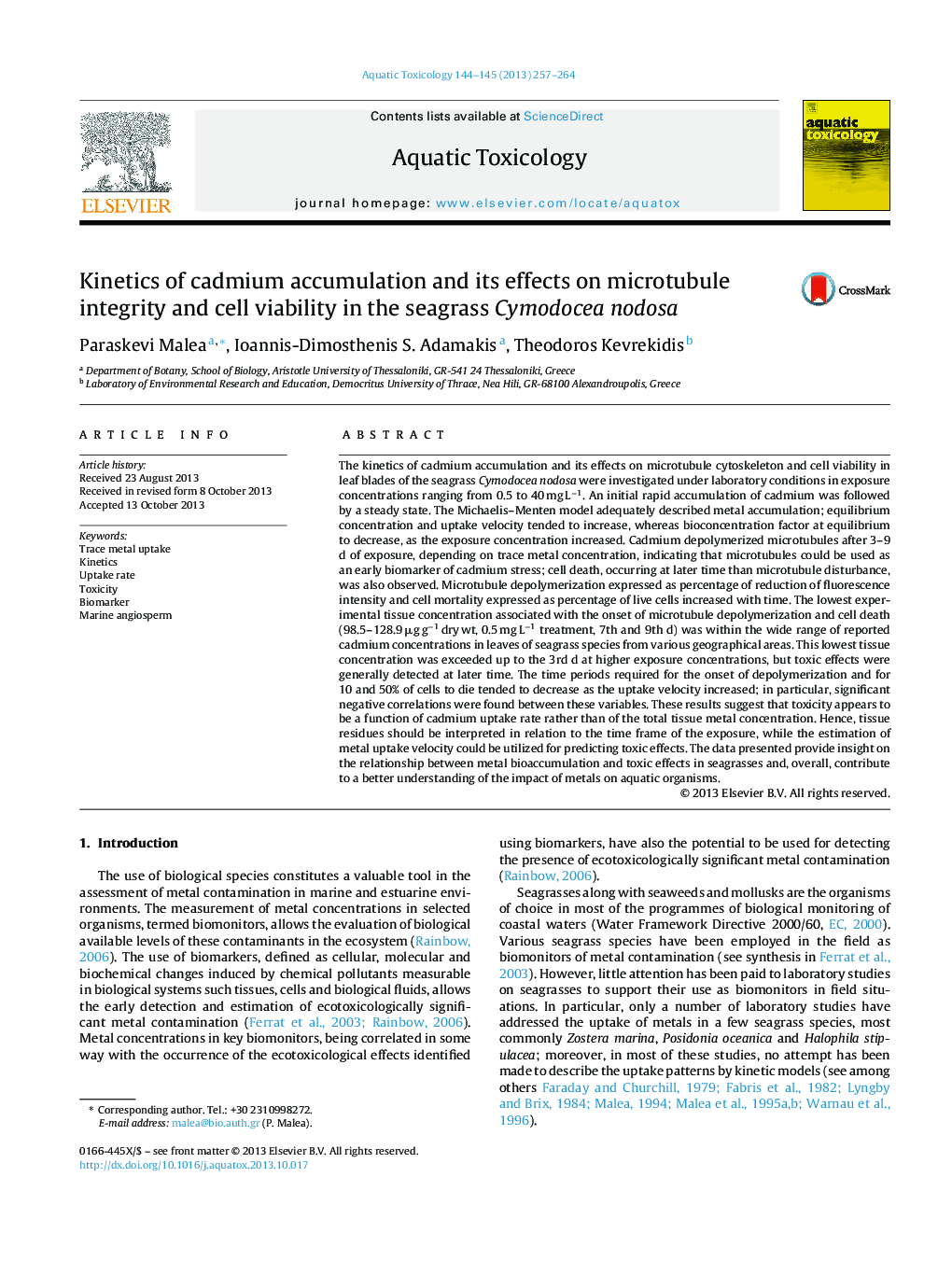| کد مقاله | کد نشریه | سال انتشار | مقاله انگلیسی | نسخه تمام متن |
|---|---|---|---|---|
| 4529356 | 1625960 | 2013 | 8 صفحه PDF | دانلود رایگان |

• Cd effect on microtubules and viability of seagrass leaf cells was assessed.
• The Michaelis–Menten equation satisfactorily dercribed the kinetics of Cd uptake.
• Cd depolymerized MTs after 3–9 d of exposure, cell death occurred at later time.
• Toxicity appeared to depend on Cd uptake rate rather than on tissue Cd content.
• MTs can be used as biomarker of Cd stress and uptake rate for predicting effects.
The kinetics of cadmium accumulation and its effects on microtubule cytoskeleton and cell viability in leaf blades of the seagrass Cymodocea nodosa were investigated under laboratory conditions in exposure concentrations ranging from 0.5 to 40 mg L−1. An initial rapid accumulation of cadmium was followed by a steady state. The Michaelis–Menten model adequately described metal accumulation; equilibrium concentration and uptake velocity tended to increase, whereas bioconcentration factor at equilibrium to decrease, as the exposure concentration increased. Cadmium depolymerized microtubules after 3–9 d of exposure, depending on trace metal concentration, indicating that microtubules could be used as an early biomarker of cadmium stress; cell death, occurring at later time than microtubule disturbance, was also observed. Microtubule depolymerization expressed as percentage of reduction of fluorescence intensity and cell mortality expressed as percentage of live cells increased with time. The lowest experimental tissue concentration associated with the onset of microtubule depolymerization and cell death (98.5–128.9 μg g−1 dry wt, 0.5 mg L−1 treatment, 7th and 9th d) was within the wide range of reported cadmium concentrations in leaves of seagrass species from various geographical areas. This lowest tissue concentration was exceeded up to the 3rd d at higher exposure concentrations, but toxic effects were generally detected at later time. The time periods required for the onset of depolymerization and for 10 and 50% of cells to die tended to decrease as the uptake velocity increased; in particular, significant negative correlations were found between these variables. These results suggest that toxicity appears to be a function of cadmium uptake rate rather than of the total tissue metal concentration. Hence, tissue residues should be interpreted in relation to the time frame of the exposure, while the estimation of metal uptake velocity could be utilized for predicting toxic effects. The data presented provide insight on the relationship between metal bioaccumulation and toxic effects in seagrasses and, overall, contribute to a better understanding of the impact of metals on aquatic organisms.
Journal: Aquatic Toxicology - Volumes 144–145, 15 November 2013, Pages 257–264